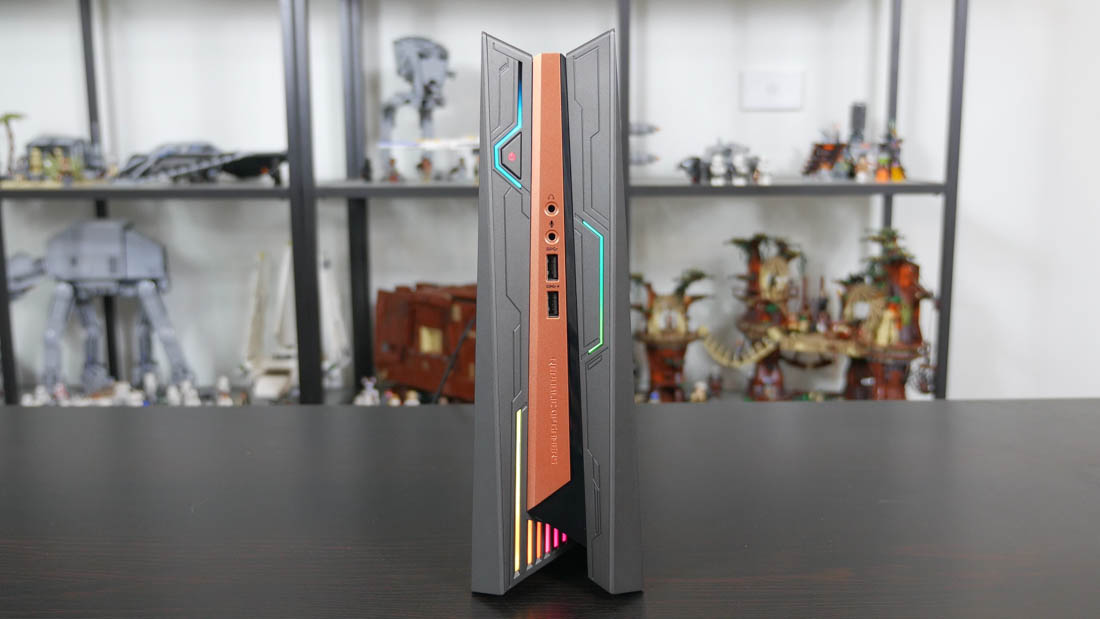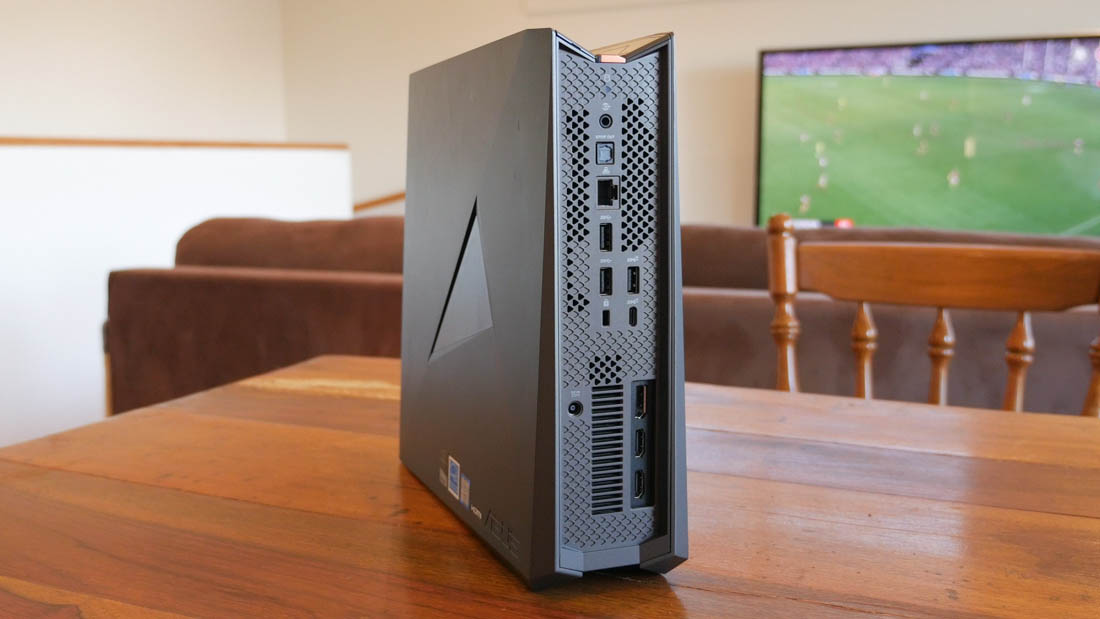Mini gaming PCs haven't been as popular as Valve would have liked - their Steam Machines platform launched and died faster than a North Korean missile - but they're still kicking around as a niche option for those who want something compact and pre-built. The Asus ROG GR8 II, which I've been putting through its paces in the last week, is one such example.
The GR8 II is designed for those who want a compact gaming system for a desk or living room, but would rather something more powerful than an Xbox One or PlayStation 4. This system is similar in size to current-generation consoles, however its use of high-end Intel Kaby Lake processors and Nvidia GeForce GTX 1060 graphics leads to a much faster experience.
This extra performance does come at a price: a GR8 II plus controller will set you back at least $1,000, whereas you can currently purchase a PlayStation 4 Pro for just $400. Asus does claim the GR8 II is "VR-ready" for premium headsets like the Oculus Rift and HTC Vive, though again, this is a much more expensive setup than Sony's PlayStation VR.
Let's talk about size to begin with. The GR8 II occupies 7.4 litres of space, with four litres of internal space. This makes it slightly larger than the PlayStation 4 Pro (5.3 litres), and larger again compared to the Xbox One S (4.3 litres). The GR8 II's angular design means its physical body doesn't quite occupy a full 7.4 litres, but it's still notably larger than current console offerings.
Make no mistake: the GR8 II has a decidedly 'gamer style' design, which appeals only to a certain crowd. Most other mini PCs and game consoles go for a more understated design that coheres better with other living room devices, but Asus has decided that crazy angles and weird patterns are best for their offering. Unless you have a ton of sci-fi style equipment or just like this gamer aesthetic, there's a good chance the GR8 II will look out of place wherever you position it.
To my eyes, the GR8 II is remarkably ugly. It's no different to most of Asus' other ROG gear: confusing lines, aggressive angles and cluttered design elements. The grey color scheme with dark copper highlights is perhaps the best aspect to this design, though it doesn't redeem an otherwise unattractive chassis.
Also, Asus couldn't resist making part of this chassis illuminated via RGB LEDs. There are some lines and grooves along the front panel that light up to whatever color you desire. Obviously RGB lighting is all the rage these days, but I don't think it works well with the design of the GR8 II. The lights look like a tacky addition simply to add "RGB lighting!" to the system's feature page, and can often clash with the copper center strip. But of course you can disable the RGB lighting if you'd like.
The GR8 II has a decent set of I/O, although understandably less than a traditional desktop with a full-size motherboard. There's two USB 3.0-A ports on the front plus two 3.5mm audio jacks. On the back is a further two USB 3.0-A ports, a USB 3.1-A port, a USB 3.1-C port (no Thunderbolt 3), an Ethernet port, an optical S/PDIF port and a 3.5mm audio jack. For display connectivity you get a DisplayPort and two HDMI ports attached to the graphics unit.
The GR8 II doesn't have an internal power supply, so Asus has included an external 230W adapter. It's still a portable unit if you want to carry it around for a LAN party, at just 4kg, however keep in mind that you'll need to bring the large and weighty power brick as well.
It's also worth mentioning the GR8 II is designed to stand upright, with rubber stands on the bottom. Of course you can place it on its side if you like, but the angular design makes the unit look pretty strange in this orientation.
The GR8 II is not particularly upgradable. Neither the CPU or GPU can be replaced by the user, despite a large section of the internal chassis being devoted to a custom GPU module. In fact to even access these two components, you'll need to remove pretty much everything from the chassis, as Asus has made it deliberately difficult to access the front side of the motherboard.
There are some user-replaceable components on the side of the motherboard you can actually access. There's a single DIMM slot, with the other DIMM presumably located on the inaccessible side of the motherboard. It should be easy to upgrade the system to 16GB of RAM from 8GB as a result, though 32GB will require a full disassembly.
For storage, there's a single M.2 2280 slot, equipped with an SSD out of the box. The GR8 II also supports a 2.5-inch storage drive, but you'll only get the required connector bracket if you purchase a model that's preconfigured with a HDD inside. My review unit didn't come with a HDD, so the bracket was missing.
Update: Asus informs me that the 2.5-inch connector bracket in my review unit was missing, but it is provided in all retail units





